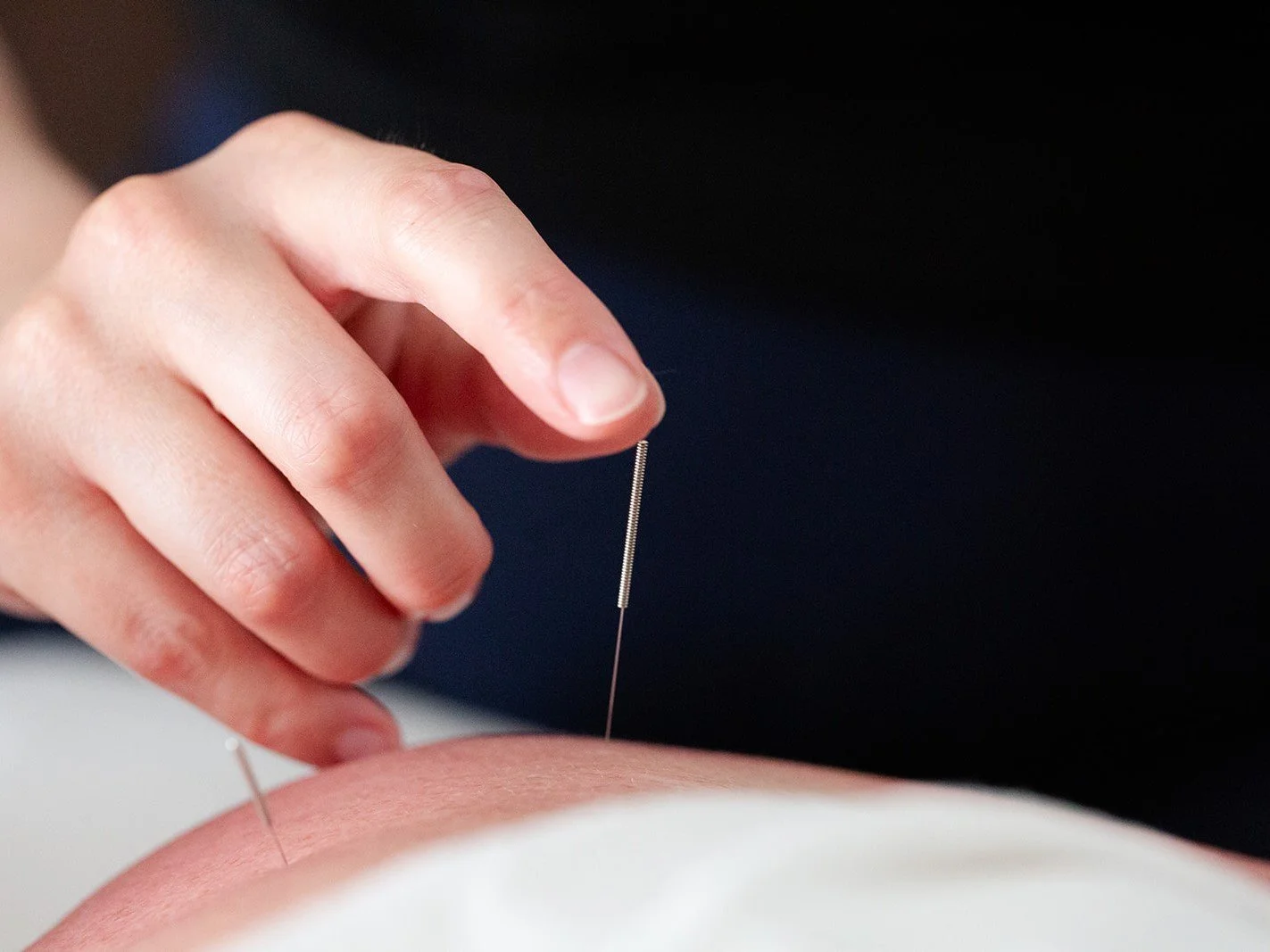
Let’s talk about Acupuncture
Acupuncture FAQ
Why should I care about acupuncture when my physio already does dry needling and IMS?
Even when working with purely practical concerns like sports injuries and work related pain patterns, musculoskeletal needling— the type called dry needling and IMS— will only serve to address the specific muscles and soft tissues that are currently having trouble.
Traditional acupuncture shines in its ability to use systematic acupuncture points to address WHY these injuries are happening and WHY they drag on for so long.
It will address why things get better or worse at rest or during work, why the soft tissues have such a hard time with recovery and rehab, and why it's so easy to injure them in the first place (including balance problems and joint mobility in general), why the digestive system isn't assimilating the protein that you're giving it, why you feel tired no matter how much sleep you get, why you can't quite tell when you're overtraining, and why you're so prone to inflammatory responses.
These problems and more can be addressed with traditional Chinese medicine and involve thinking much deeper and more integratively than just the musculoskeletal system.
What does Acupuncture feel like? (AKA does it hurt?)
Sometimes it hurts, friend.
But if it does, I’m absolutely not going to let it hurt the whole time.
You usually feel the first little poke, which I would characterize more as annoying than painful. And for as long as I’m hanging onto it, it can feel kind of weird— so I’ve developed fast hands to mitigate that feeling.
As a whole, it should be set and forget. Sometimes while they sit, the needles get a dull, achy sensation, which is considered good and a sign of an effective point.
In any case, you are in complete control over which needles stay for the whole duration and which ones come out.
And if you’re afraid of needles? I’m not going to try to talk you out of that fear, but I can definitely say that these are not the types of needles that the doctor uses. They are so, so much smaller.
Is it just needles the whole time?
The needles are definitely the main method of treatment here. I can add electrostimulation and electromoxa to the needles where I feel they can be of use.
I’m also very good at suggesting cupping and guasha for you where needed. Though I do rely on you telling me whether you found it useful on your end.
I’m not great at all about adding ear seeds or herbal liniments into a treatment, so please express interest to me about those methods, if you have any!
Do you also do dry needling?
Yes! Although that is a modern term, and one favoured by physiotherapists (they also call it IMS). It’s just musculoskeletal needling.
However you want to call it, it’s the process of needling into a muscle in order to make it relax.
I’ve heard from various clients that the needling method used by the physios to achieve this can be a little intense and heavy-handed compared to the method that I use.
How does acupuncture work?
This is the big one. The one I’ve struggled with. It’s such a layered question; and ultimately so vague, I didn’t even know how to answer it. There are so many tangents I could go on, and I would— and never finish a single thought before moving onto the next. I never knew whether to approach this question from a scientific standpoint, or to start regurgitating the whole and breadth of Traditional Chinese Medicine.
From a purely physical perspective, acupuncture takes tiny needles made of highly conductive stainless steel and places them in equally conductive parts of the body to create an effect. Because, as we know, the nervous system runs entirely on electrical impulses. You can see evidence of an effect when muscle spindles fasciculate in response to the needle.
Acupuncture starts with the perspective that your body knows exactly how to function. It knows exactly how to operate. It knows exactly how to heal itself. But sometimes, injuries or big emotions or lifestyle drift will knock it out of that groove. Sometimes it needs a little nudge to get it back in line. That’s where acupuncture comes in.
It’s the little nudge that will get things moving in the right direction again.
Why do the needles have to sit?
As I understand, physios tend to get the needles in, reef them around a bit, and get them out. I’m almost certain this is why some people experience little benefit from dry needling and great benefit from acupuncture (with or without the reefing).
From acupuncture’s perspective, each needle is interfacing with the nervous system in any given point, and that system needs time to integrate the stimulation from the needle before it is removed. This is why we let them sit in place for anywhere from ten to thirty, even forty five minutes.
What should I do before and after?
Eat! I will be expecting you to have eaten that morning, and expecting you to eat something afterward. Once the acupuncture gives your body a solid direction to go in , it will need the resources necessary to repair itself.
Let me know if you want advice about specific things to eat that will help your personal situation and add to the therapeutic effects of the acupuncture.
Consider wearing loose clothing or layers to the appointment.



